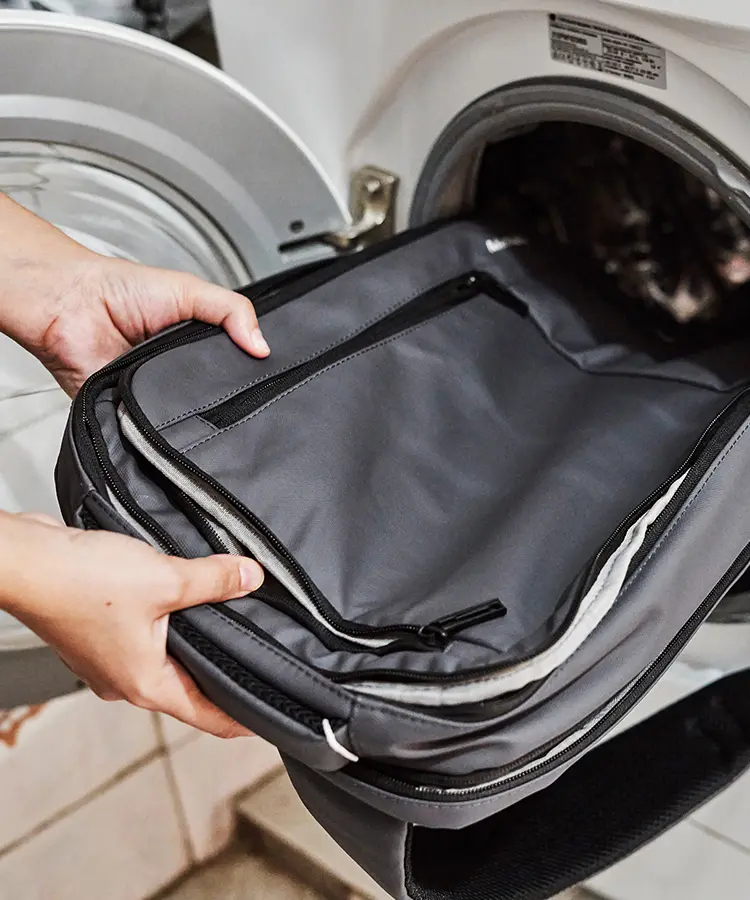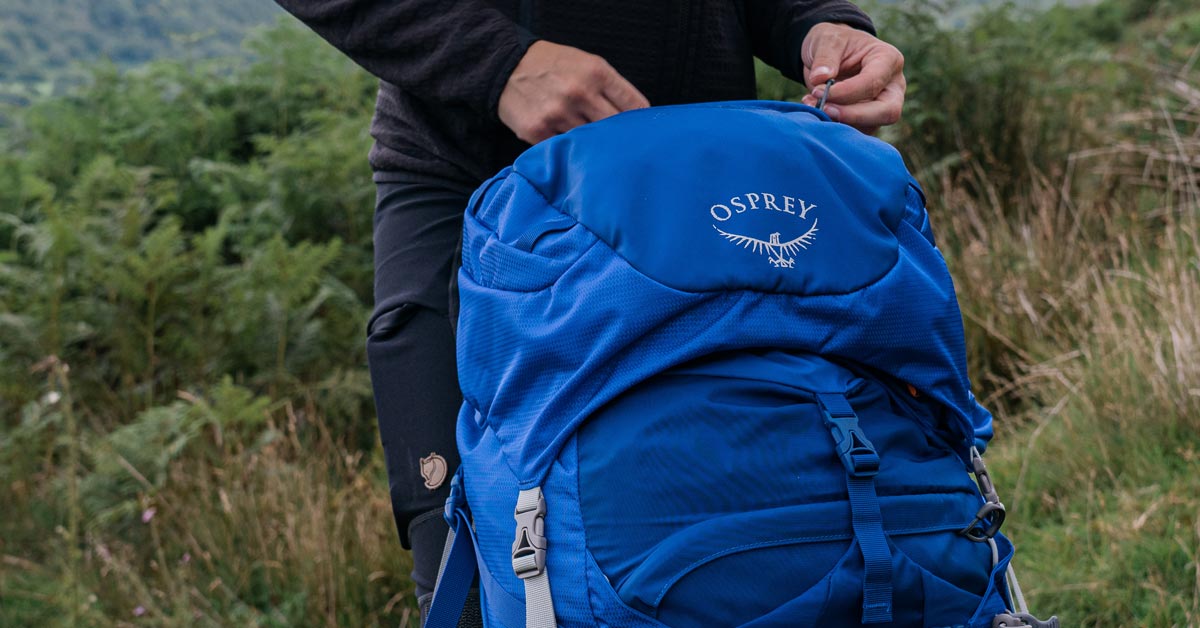Introduction
Washing and refreshing your backpack is essential to maintain its cleanliness, appearance, and longevity. Over time, backpacks can accumulate dirt, stains, and odors from regular use, outdoor adventures, or travel experiences. By following effective cleaning methods, you can ensure that your backpack remains in top condition and ready for your next journey. Let’s explore comprehensive steps and tips on how to wash and refresh your backpack thoroughly.

Step 1: Prepare Your Backpack for Cleaning
Before starting the cleaning process, empty your backpack completely and remove any items or debris inside. Check all compartments and pockets to make sure everything is removed. If your backpack has removable straps or accessories, detach them according to the manufacturer’s instructions. This will help ensure a thorough cleaning and prevent damage to any detachable parts during the washing process.
Step 2: Spot-Clean Stains and Dirt
Inspect your backpack for any visible stains, spots, or areas of concentrated dirt. Use a soft brush, damp cloth, or gentle scrubbing tool to spot-clean these areas. Avoid using harsh chemicals or abrasive cleaners, as they may damage the fabric or color of your backpack. For tough stains, you can create a mild cleaning solution using water and a gentle detergent suitable for the material of your backpack.
Step 3: Hand-Wash or Machine-Wash Your Backpack
Depending on the material and care instructions provided by the manufacturer, you can choose to hand-wash or machine-wash your backpack. Hand-washing is generally recommended for delicate fabrics, intricate designs, or backpacks with special features that may be damaged in a washing machine. If hand-washing, fill a bathtub, sink, or large container with lukewarm water and a small amount of mild detergent. Gently agitate the water to create suds and immerse your backpack, ensuring it is fully submerged.
Step 4: Rinse Thoroughly and Air Dry
After washing your backpack, rinse it thoroughly to remove any soap residue. You can do this by gently squeezing the backpack or using a clean, damp cloth to wipe down the surfaces. Avoid wringing or twisting the backpack, as this may damage the fabric or distort its shape. Once rinsed, hang your backpack to air dry in a well-ventilated area away from direct sunlight. Ensure that all compartments are open to allow proper airflow and complete drying.

Step 5: Refreshing and Deodorizing Your Backpack
To eliminate odors and refresh your backpack, you can use natural deodorizing methods such as baking soda or activated charcoal. Sprinkle a small amount of baking soda or place activated charcoal pouches inside the compartments of your backpack and let them sit for a few hours or overnight. These absorbent materials will help neutralize odors and leave your backpack smelling fresh and clean.
Step 6: Reassemble and Store Your Backpack
Once your backpack is completely dry and refreshed, reassemble any detachable parts and accessories. Check that all zippers, buckles, and straps are in working order and securely attached. Store your backpack in a cool, dry place away from direct sunlight and moisture to prevent mold or mildew growth. Proper storage will help maintain the integrity of your backpack and ensure it is ready for your next adventure.
Additional Tips for Backpack Maintenance:
- Regularly spot-clean your backpack to prevent dirt and stains from building up.
- Avoid using harsh chemicals, bleach, or abrasive cleaners that may damage the fabric.
- If machine-washing, use a gentle cycle and place your backpack in a laundry bag or pillowcase to protect it during the wash.
- Consider using a specialized backpack cleaner or waterproofing spray to protect your backpack against water and stains.
- Follow the manufacturer’s care instructions and recommendations for cleaning and maintenance to prolong the life of your backpack.

Step 1: Prepare Your Backpack for Cleaning
Before starting the cleaning process, take the time to inspect your backpack thoroughly. Check for any loose threads, damaged seams, or worn-out areas that may require repair before washing. Addressing these issues preemptively will ensure that your backpack remains durable and functional throughout its lifespan. Additionally, consider removing any detachable straps, accessories, or frames to facilitate a more thorough cleaning process.
Step 2: Use a Gentle Cleaning Solution
When washing your backpack, opt for a gentle cleaning solution to preserve the integrity of the fabric and prevent color fading. Avoid using harsh detergents, bleach, or strong chemicals that can damage the material or compromise the waterproofing properties of your backpack. Instead, choose a mild detergent specifically formulated for outdoor gear or backpacks. Alternatively, you can use a specialized backpack cleaner recommended by the manufacturer for optimal results.
Step 3: Hand-Washing Your Backpack
For backpacks made of delicate fabrics, intricate designs, or with specific care instructions, hand-washing is the preferred method to ensure gentle but thorough cleaning. Fill a basin or bathtub with lukewarm water and add a small amount of the gentle detergent. Submerge your backpack and gently agitate the water to create suds. Use a soft brush or cloth to scrub the exterior and interior surfaces of the backpack, paying attention to areas with visible dirt or stains. Rinse the backpack thoroughly with clean water to remove all soap residue.
Step 4: Machine-Washing Your Backpack
If your backpack is machine-washable and the care label permits it, you can safely clean it in a washing machine. Before placing your backpack in the machine, ensure that all zippers are closed, buckles are fastened, and any detachable parts are secured. Use a gentle cycle with cold water and a small amount of mild detergent to prevent damage to the fabric. To protect your backpack during the wash cycle, place it in a laundry bag or pillowcase to minimize abrasion and friction.
Step 5: Drying Your Backpack
After washing, it’s crucial to dry your backpack thoroughly to prevent mold, mildew, or unpleasant odors from developing. Avoid using a dryer or exposing your backpack to direct heat sources, as this can damage the fabric and compromise its structural integrity. Instead, hang your backpack upside down or lay it flat on a clean towel in a well-ventilated area. Ensure that all compartments are open to allow air circulation and facilitate even drying. Patience is key during the drying process, so allow your backpack to air dry completely before storing or using it again.
Step 6: Maintaining Waterproofing and Protection
If your backpack features waterproofing or water-resistant properties, it’s essential to maintain these qualities after washing. Consider applying a waterproofing spray or reproofing treatment recommended for the specific material of your backpack. This additional layer of protection will help safeguard your backpack against moisture, stains, and environmental elements, ensuring it remains resilient and functional in varying weather conditions.

Conclusion: Preserving Your Backpack for Future Adventures
By following these effective ways to wash and refresh your backpack, you can ensure that your trusted travel companion remains clean, durable, and reliable for all your future adventures. From proper preparation and gentle cleaning techniques to thorough drying and maintenance tips, caring for your backpack is essential to maximize its lifespan and functionality. Treat your backpack with care, respect its unique features and materials, and enjoy the confidence of knowing that it’s always ready to accompany you on your next journey. With a little time and effort invested in cleaning and refreshing your backpack, you can rejuvenate its appearance, enhance its performance, and continue exploring the world with a reliable and well-maintained travel companion by your side.

